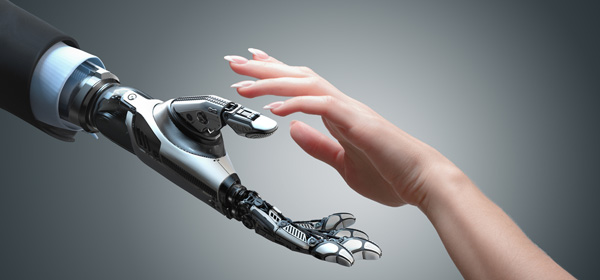Robots may become the new ‘nannies’ for older Australians who can no longer rely on live-in family to look after them in their twilight years.
Improved pharmaceuticals and a better understanding of how to live healthily have extended the average lifespan for seniors.
At the same time, more families are struggling to meet high mortgage payments and need to have both parents working, leaving little time to take care of elderly parents’ daily needs.
But having their parents living to 85 or beyond is causing new problems for this cohort, known as ‘the sandwich generation’.
Yes, they are better protected from the illnesses that may have cut the lives of previous generations short, but there is no escaping the realities of ageing that make life troublesome.
Failing eyesight, hearing and mobility make living in the 21st century challenging for older people.
Fortunately, there are companies around the world that are researching technologies to help the ageing population remain independent.
We have compiled a list of some of the more cutting edge technologies that are being developed to ensure good quality of life in a long retirement.
Robo care for mobility
A Japanese engineer has developed a Robot-Teddy Bear intended to perform tasks such as lifting an elderly person out of bed and helping them stand up or move into a wheelchair. Robear is the brainchild of Toshiharu Mukai, of the Riken-SRK Collaboration Center for Human-Interactive Robot Research.
GP appointments from home
Some specialists are already happy to consult their patients online, using Skype and other computer-based programs. For people living in a rural setting, it’s a boon to not have to travel long distances to see a doctor. If you don’t live far from your doctor, but getting to the clinic is problematic, ask your GP if they will do the appointment online. If so, you get the added benefit of not being in a waiting room exposed to all the lurgies that other patients may have brought in with them.
Lighting up your life
Do you feel the small print is becoming so tiny that it is impossible to read, especially when you don’t have a spotlight shining on it? Increasingly, expect to see more LED lights come to the rescue. Accessories designer Ralph Lauren has already created a tote bag with internal LED lights to help you spot small items such as pens. And many restaurants are also adopting LED lighting to illuminate menus within their ‘moodily-lit’ establishments.
Good sense
Companies are working hard to create sensors for all manner of human activities in order to keep them safe. This technology will be especially useful for older people who live far from their families. According to The Huffington Post, it won’t be long before there is a sensor to inform a loved one if their elderly parent hasn’t turned on the TV in two days or has missed their medication. Soon, there will be pill dispensers equipped to send a message to a nominated friend or family to indicate if medicines have not been taken.
Plus, it won’t be long before standard home designs have sensors to help locate remote controls, car keys, mobile phones and to check whether the front door has been locked.
Motion detected
Motion sensors throughout the home will be able to detect if a senior has fallen over. This technology will automatically dial an emergency number to provide assistance. These sensors can also reveal if a person has or has not been able to get out of bed and send that information to a caregiver. Visits to the fridge may also be monitored, to let a caregiver know that their relative is eating regularly. And sensors on the stove could alert those concerned if a pot has been left on too long.
Related articles:
How robots could take over the world
Will the carer supplement be paid?
Robots run new Japanese hotel

